
马特是真名,历史文化探访者,个人网站www.tiexiuyugudao.com,微信公号:斗量之海。
Old Travels of Bukhara: Great Britain-Russia Game, the Central Asian Revolution and the Tourism Market in the School of Economics
This is an old article, a trip to Uzbekistan in 2019. This trip was my last foreign trip before the epidemic, and it is also included in my book "Blind Flow".
There is no direct train from Termez to Bukhara, it takes a long way to go around, and there is no direct bus, so I had to hire a driver to take me there. Except for wrestling with the cunning driver all the way, the whole journey Still good. The driver was so greedy that he even wanted me to pay for him when he went to the toilet (and no matter what kind of toilet in this country charges, free public toilets may be a rare legacy of socialism in China), but he ended up in Bukha The hotel that La helped me find is very cost-effective, just next to the old city center and not too noisy. The room is big and the breakfast is good.
When I was in Samarkand, I was disappointed by the commercial atmosphere of the city, although this is a bit traveler's wishful thinking. But when I got to Bukhara, I realized how lively Samarkand is in comparison, and Bukhara is a real theme park. I tried to convince myself that commercialization itself was the temperament of the city in the classical era, and now it is just a return to business tradition after going through the planned economy of the Soviet era, although this return to tradition is very forceful.
Both Uzbekistan and China have this characteristic, that is, if the government wants to advocate a return to tradition, it will definitely unearth the bad things in the tradition, and the good tradition will not be encouraged. This screening method can be so accurate. Picking out the worst is also intriguing to me.
I went to Turkey and Iran before, and even if I didn’t buy anything, the shopkeeper would be happy to chat with a smile, but in Uzbekistan, especially in the shops around the scenic spots, if I didn’t buy anything, the shopkeeper would immediately show displeasure cold face. This kind of cold face is probably the legacy of the socialist state-run store, which has not really recovered the commercial culture on the traditional Silk Road.
Before coming to Bukhara, I imagined the city as a sacred religious and academic capital, after all, this is the hometown of Ibn Sina, one of the most famous scholars in the Islamic world, and at the same time gave birth to the most important The religious scholar Buhari and the far-reaching Sufi founder Baha'uddin Nagshbandi.
Everything is not as expected.
I entered the center of the old town of Bukhara, and the convenient-looking tourist signs showed that there is a relatively advanced area in this country with underdeveloped tourist services. Lyabi-Hauz is the center of the old town of Bukhara and the main place where tourists gather to eat and rest. Liabi Haoz has one of the few surviving ponds in the old town of Bukhara. Before the Soviet era, there were many ponds in the old town of Bukhara, but the lack of maintenance and breeding of diseases, most of them were filled in the 1920s and 1930s. , Liabi Howze survived because it was the centerpiece of a magnificent 16th- and 7th-century complex.

The history of the Liabi Hauz complex is related to the man Nadir Divan Beghi, Imam-Quli Khan, Emir of Bukhara The minister, also Emile's uncle.
When Nadir built the complex, a large house nearby belonged to a Jewish woman who thought it would be an ideal location to dig a pond, but the Jewish woman rejected his offer to buy the house. Nadir brought her before the emir to rule, but Islamic judges in Bukhara argued that Nadir would have to ask the Jewish woman's consent to get the land.
Because he could not buy the Jewish woman's land, Nadir thought of a very immoral way. He built a small reservoir nearby and dug an irrigation canal, and the water destroyed the foundation of the Jewish woman's house. The Jewish woman approached Nadir, he again offered to buy her house at a reasonable price, but the Jewish woman refused the money, she wanted Nadir to give the Jews a piece of land for the construction of the synagogue, Nadir agreed .
This land is the Jewish quarter of Bukhara, where the synagogue and the pond appeared almost simultaneously as a symbol of the city's religious tolerance and ethnic harmony. Despite Nadir's immoral method of acquiring the land, it was civilized for his identity, and the rulings of Islamic jurists were seen as protection of the Jews by Muslim societies.
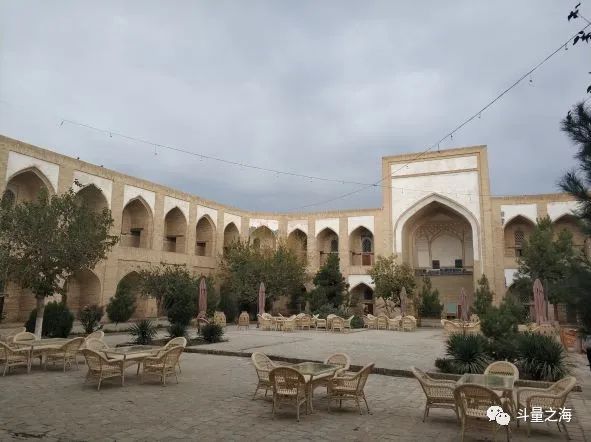
The mosques and the School of Classics around Liabi Haoz inevitably make people feel a little tired. The Nadir School of Law was originally a merchant hotel, but after the construction was completed, Emir came to inspect and thought it was a School of Classics, so he really changed it. It has become a school of classics, and now the building has returned to its original function, and it is full of shops consisting of small rooms.
Today almost all of the Schools of Economics in Bukhara have been transformed into large tourist markets. If you don’t consider the expensive handmade specialties, the outer wall of Nadir School of Buddhism is worth seeing. You can compare it with the Sherdore School of Law in Samarkand, where peacocks are painted on the walls of Nadir School of Law ( It may also be the Western Phoenix Phoenix) with a sheep in its mouth, and the center is also a human-faced sun.
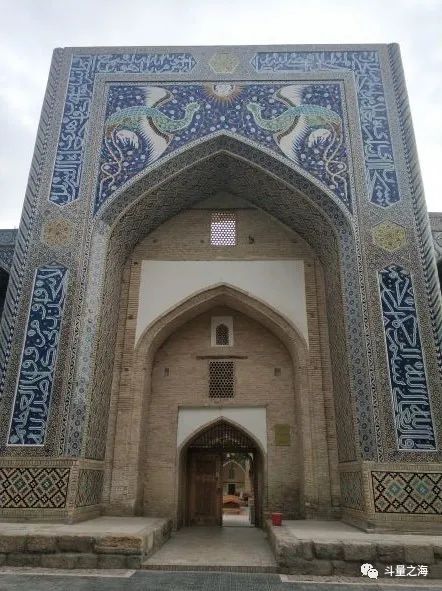
I sat and rested by the pond and watched many people take wedding photos here. There was a couch by the pond, and four Uzbek uncles were sitting on it and playing cards. It should have been a scene of local life. Suddenly, a group of tourists were filming them, and I wondered if they were really playing cards, or were they acting as actors?
In short, my first impression of Bukhara was that the former Islamic Institute was full of shops and performances for tourists. If Samarkand is a government-run tourism business, and the private life is well preserved, then Bukhara has opened up a national tourism business. When a country is rich, it still needs to overhaul civil engineering, so that the descendants are destitute, and they can survive by attracting foreigners to travel and make money.
The most photographed tourist attraction in Liabi Houz Square is the statue of Nasr al-Din riding a donkey. When I went to Turkey before, the locals said that Nasr al-Din was a Turk, born in Konya during the Seljuk Dynasty, and a Sufi wise man. But the Uzbeks believe that he was born in Bukhara, and there is also a legend of Nasr al-Din among the Uyghurs, who is Avanti. From the Tarim Basin to Asia Minor, more than half of Asia knows that Nasr al-Din is very smart, probably because the countries along the entire Silk Road are either tyrants or profiteers. Wisdom must be worshipped.

In the northwest corner of the pond is the sunken Maghoki-Attar mosque, which is very old and has been excavated by archaeologists from the 5th century AD Zoroastrian temple and earlier Buddhist temple. During the Mongol invasion, the locals buried the mosque with sand. The foundation of the building is very low, and now it is surrounded by archaeological excavations.
Before the construction of the first synagogue in Bukhara, Jews shared the mosque with Muslims as a place of worship, and Jews worshipped after Muslims. Now it has been converted into a carpet museum, displaying exquisite carpets produced locally in Bukhara. The carpet weaving process is also a specialty of Bukhara on the Silk Road. Interestingly, I found a carpet embroidered with patterns of Yin-Yang and Hetu Luoshu in the museum. The staff said that it was a work left by students from China who were studying carpet crafts in Bukhara.
Continue westward from the Carpet Museum, pass several commercial streets selling stereotyped tourist souvenirs, and arrive at the Kalon Minaret, the symbol of the old city of Bukhara. The urban area around the Kalon Mosque has always been here. the most central part of the city.
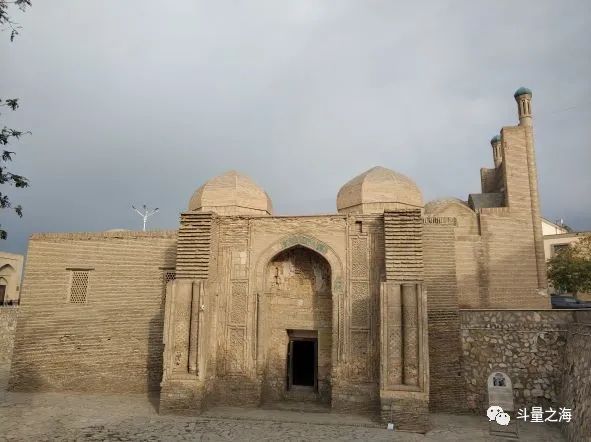
In 1127, the ruler of the Karakhanate, Arslan Khan, built the Kalong Mosque. When the Mongols conquered Bukhara, they thought this mosque was the Khan's palace and kept the minaret. , There is also a saying that the Mongols are amazed at the tall and majestic minaret and think that it should not be destroyed. However, the mosque itself was not spared the fire, and the mosque remained in ruins for many years afterward.
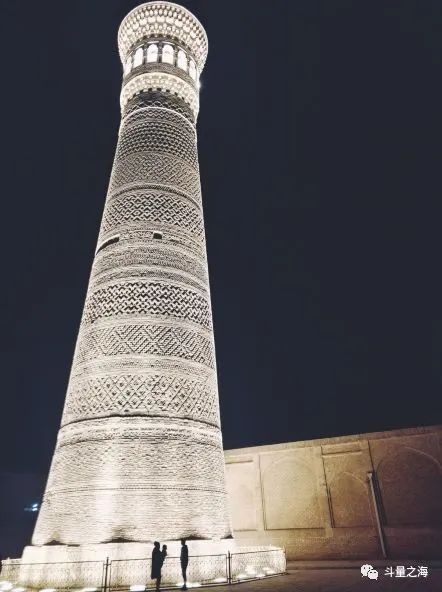
The size of the minaret of Kalong is particularly conspicuous in this urban area, obviously exceeding the practical function of the minaret of the mosque, so scholars speculate that the minaret may follow the Zoroastrian tower of light. During the period of the Bukhara Khanate, the tower took on another function - executions, when the rulers of Bukhara pushed unwelcome people from above and fell to their death in public.
Many cities have a phallic landmark that often symbolizes a show of power and wealth, and Bukhara's rulers have apparently chosen the most brutal of these expressions.
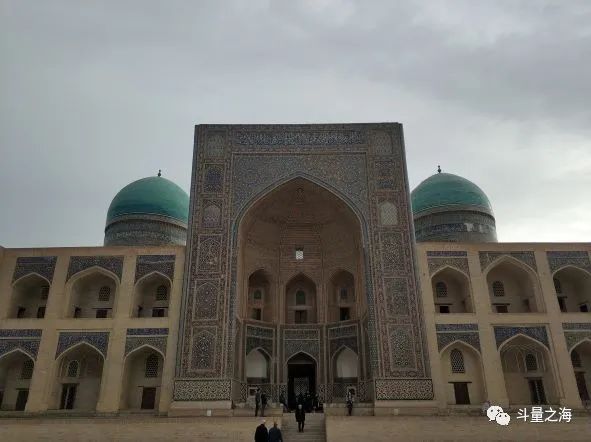
The Kalong Mosque is about the same size as the Bibi Hanum Mosque in Samarkand, but is quite different in architectural style. The mosque is covered by a large blue tiled dome, the promenade surrounding the inner courtyard of the mosque has 288 domes supported by 208 pillars, and a tall tiled arch door facing the courtyard provides access to the main sanctuary. .
On the way from the Kalong Mosque to the outer city, I passed a prison museum. The museum itself has not much to see, but mainly displays pictures of punishments and instruments of torture in the Emirate of Bukhara. I walked into this prison and found a huge pit, known locally as the worm pit, where the ruler would throw his least favorite prisoners, starving and suffering among worms and rats.
I suddenly remembered the story I had read about this worm pit before. Two Englishmen were once imprisoned here. Their experiences were regarded by the Western world as a heroic story of devoting themselves to the wild East. The history behind these two people is the battle between Britain and Russia. The Great Game of Central Asia, Afghanistan and India.
In 1831, Captain Alexander Burnes' survey of the Indus River opened the way for Britain to Central Asia. He entered Afghanistan and reached Bukhara via the Hindu Kush River, becoming the first to provide Central Asian intelligence to Britain. After returning to China, he published "Traveling in Bukhara".
In 1838, British Colonel Charles Stoddart arrived in Bukhara intending to form an alliance with Nasrullah Khan. Stoddart's task was to persuade the rulers of Bukhara to free Russian slaves, remove the pretext for a possible Russian invasion, and sign a treaty of friendship with Britain. Nasrallah Khan was annoyed that Stoddart did not bring gifts or bows, and more importantly that Stoddart only brought a letter from the Governor of India, but Nasrallah Khan believed that he and the British The queen is the equal, so Stoddart is imprisoned in the prison's worm pit.
In 1841, Captain Arthur Conolly arrived in Bukhara to try to persuade Nasrallah Khan to release Stoddart, but was also locked up. With the British army's military defeat in Afghanistan and an unanswered letter to Queen Victoria, Nasrallah Khan executed the two men in 1842, beheading them in the square in front of Jacques Castle.
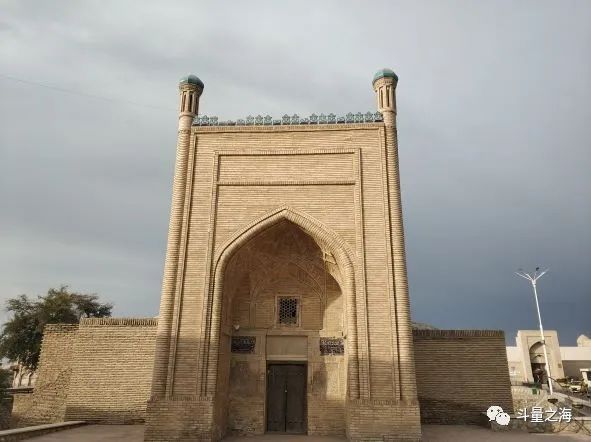
I followed the road where the two British officers were taken from the prison to the execution site to Chateau Jacques, a huge fortress that, in addition to being a military fortress, was also a small town. The castle used to be home to nobles from the surrounding areas of Bukhara, where the Emir of Bukhara received messengers from all over the world and held meetings with ministers.
The castle is similar in layout to a rectangle, with the entrance formed by two 18th-century towers, the upper part of which is connected to rooms and terraces by corridors. I saw in old pictures that the square in front of the castle used to be the market place, where the Emil stood on the watchtower and looked down on his subjects, the square was also the place where the decrees were pronounced and the prisoners were publicly executed, Charles Stoddart and Arthur It was in this square that Connolly was executed.

Today the castle is converted into a museum with exhibits about the history of the Emirate of Bukhara and the Emir family. I found a color photograph in a room of the castle of Mohammed Alim Khan, the last emir of Bukhara, sitting on a chair in blue clothes and a white turban. This photo is very famous. It was taken by Russian photographer Sergey Prokudin-Gorsky, who pioneered color photography and recorded many places in Russia. , leaving precious historical materials in the early 20th century.
Muhammad Alim Khan studied in St. Petersburg and was exposed to a lot of Russian culture and brought back to the Bukharan court. After he came to power in 1910, he initially tried to promote some modernization reforms, but soon after conservatives took control of the country, Alim Khan, who had supported reforms, also began to believe that modernization was not for his country.
In March 1918, the Young Bukharans contacted the Bolsheviks in Tashkent, telling them that the Bukharans were ready for revolution. When the Bolshevik army arrived in Bukhara and asked the Emir to hand over the city to the Young Bukhara Party, the Emir took an attitude of armed confrontation and routed the Bolshevik army.
With the end of the Russian Civil War, the new regime began to have enough strength and energy to deal with the Emir of Bukhara. In 1920, a Red Army unit attacked Bukhara, commanded by the famous Red Army leader Mikhail Frunze. Part of the building was destroyed, and the buildings seen today are basically rebuilt later.
Alim Khan fled to Kabul and died in 1944. His daughter, Shukria Raad Alimi, worked as a broadcaster for Afghan Radio, and after the Soviet invasion of Afghanistan in 1979, she fled with her family to Pakistan and then to the United States. The tour guide of the castle said that the descendants of the last Emir had returned to Bukhara and visited the castle a few years ago.
I walked across the street from the castle. The Bolo-Hauz Mosque, once the official mosque of the emir, was under maintenance. Across the road was a water tower built in 1927 and now converted into a viewing platform. Find an open-air restaurant under the observation deck for lunch.
The story of the Young Bukhara Party is very interesting. The Ottoman Empire was defeated and surrendered in the First World War, and the Sultan deposed Enver Pasha, one of the leaders of the Young Turks who was the Minister of War. Enver himself was tried in absentia during the court-martial and fled Turkey. The Young Bukhara Party was inspired by the Young Turks and established in 1916, integrating local ideology and revolutionary focus. Later, it began to defect to the Bolsheviks, and went in a different direction from Enver's Young Turks.
Enver traveled to Germany, where he came into contact with the German Communist Party, and in 1919 Enver traveled to Moscow to meet with Bolshevik leaders. In November 1921, Enver was sent by Lenin to Bukhara to help suppress a pro-Emir Turkistan nationalist uprising.
After Enver arrived in Bukhara, he made secret contacts with the leaders of the uprising and defected to the side of the insurgents in an attempt to realize his Pan-Turkestan dream. The Young Bukhara Party had different political views from Enver and stood firmly on the side of the Bolsheviks. Due to Enver's rich military experience and many old Ottoman officers around him, he won many military victories at first, and finally in 1922, he was killed by the Red Army cavalry in a raid on a village near Dushanbe.
After lunch, I went to visit an old house following the establishment of the Young Bukhara Party. The owner of this old house was one of the leaders of the Young Bukhara Party and one of the first leaders of the Communist Party of Uzbekistan, Fayzullo Khodzhayev.
The Young Bukhara Party occupied Bukhara in 1920 and formed the government of the People's Soviet Republic of Bukhara, with Faizura Khojayev appointed as its leader. With the establishment of the Uzbek Soviet Socialist Republic in 1924, Khojayev became chairman of the Revolutionary Committee, head of government, and later one of the chairman of the Central Executive Committee of the USSR.
In the eyes of some Uzbeks, Khojayev betrayed his compatriots to join the Bolsheviks. Because after the February Revolution, the Kerensky Provisional Government confirmed the independence of the Bukhara Khanate, and the new regime after 1918 only accepted the Russian Turkestan area and established the Turkestan Soviet Socialist Autonomous Republic , maintained the independence of the Bukhara Khanate. Due to the instigation of the Young Bukhara Party, the Red Army finally decided to attack the Bukhara Khanate.
But Khojayev was equally opposed to Stalin's power, which also led to his execution during the purges of the 1930s. Although Khojayev was vindicated in 1966, he remains a controversial figure in Uzbekistan. There are few memorials to him in Uzbekistan today. This old house of his family is only called the house of a local wealthy businessman. Khojayev himself is rarely emphasized. and persecution.
Khojayev reminds me of a person, Ahmaitijiang in the revolution in the three districts of Xinjiang. If he did not crash in a plane before the founding of the People's Republic of China, but lived to hold an important official position after the founding of the People's Republic of China, then his status in the hearts of Uyghurs would be different. Will the meaning be very different from what it is now?
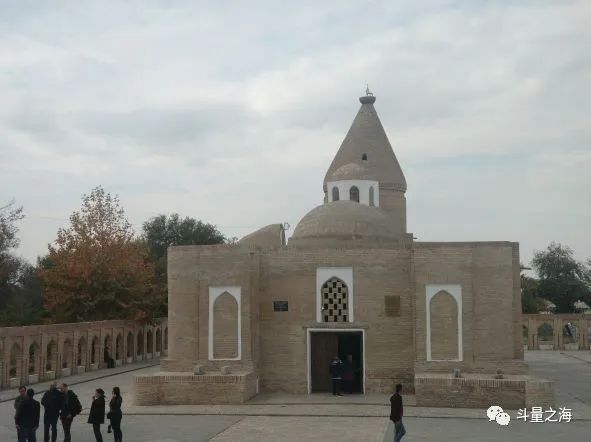
The Jacques Castle I visited before was only the inner city of Bukhara, and there is still a long way to go to the very deserted outer city. I passed a holy place, the Chashma Ayub Mausoleum, which is the Jewish prophet Job in the Old Testament. According to legend, he came here and struck the ground with a stick, and a spring appeared, and his tomb was in the spring. Next to it, people still come here to pick up water.
This is a very important relic. Before the Soviets came to Bukhara, the people here loved the pool but the water was seriously polluted. The plague was rampant and people's life span was very short. In the classical era, the public health conditions of the Islamic world had a comparative advantage, which may have come from the emphasis on cleanliness in Islamic requirements, such as cleaning before religious activities, so the modern problems did not arise because of lack of attention to hygiene, but The level of urban management and technology is backward.
The quality of public life in a city is a matter of ruling virtue. Although the ruling virtue of the Soviet Union is low to the floor in the West, it becomes the ceiling in the East. The Soviet Union's urban public management level is based on Peter the Great. On the basis of two hundred years of learning from Western Europe, and taking a small part of it to the East, it is very advanced. This is also the objective benefit of the Russian-Soviet invasion of Central Asia for the land, forcibly interrupting the inevitable bad sinking of the pre-modern state.
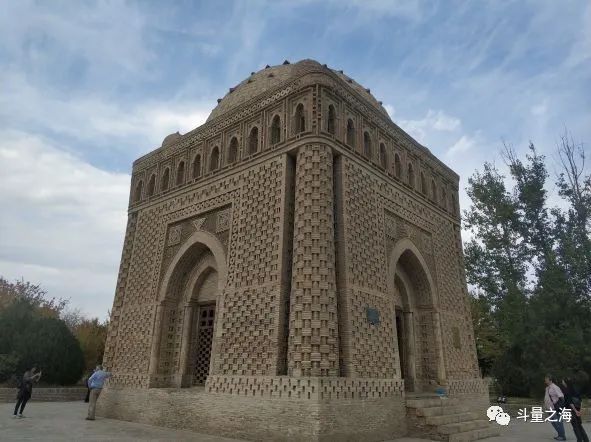
Passing Ayub's mausoleum, I walked into a park and saw a tall red-brown stone brick hollowed-out building, the Ismail Samani Mausoleum, one of the oldest historical sites of Islamic architecture in Central Asia. When the Mongols invaded, the mausoleum was submerged in the mud by floodwaters, so it was spared damage, and it was not discovered and excavated by a Soviet archaeological team until 1934.
This is probably the most important Persian-Tajik relic in the city, Ismail Samani was born in Samarkand, he unified the Samanid dynasty, during his reign the empire reached its peak, Persia Culture infiltrated into the core area of Central Asia. The Koran was first fully translated into Persian. Persian literature represented by classical poetry was very developed. The famous poet Ferdowsi wrote his great works during this period. The Book of Kings.
Passing through the park, the road becomes barren and muddy, and not far away is the remnant of the outer city walls of Bukhara. Many of these city walls built during the Shaybani Dynasty have collapsed and damaged, and only the gate has been rebuilt due to the tourist landscape. I walked back along the outer wall to find Char Minar, the building on the cover of the Asian edition of Lonely Planet, wrapped in the old town neighborhood.
The building is famous for its four towers and is generally believed to be a school where Sufi ceremonies were held. Although the building's name means four minarets, those four towers are not minarets, but decorative ones, thought to represent Christianity, Islam, Judaism and Buddhism, and the builders hoped to blend the commonalities between them.
Opposite the building is a stall selling souvenirs, and although the owner swears that his items are locally handmade, I found an undamaged sticker on the bottom of a copper vessel that said Made In India.
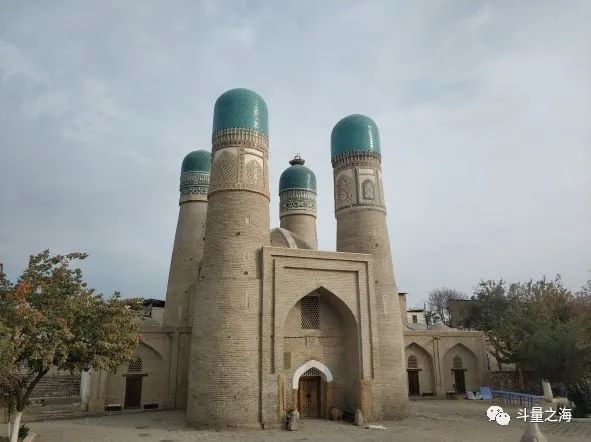
On my last day in Bukhara, I went back to visit the synagogue next to Liabi Hauz. Today the synagogue has become a famous tourist attraction, but the religious activities of Judaism are still carried out inside. The term Bukharan Jews was invented by European travelers visiting Central Asia in the 16th century, when most of the Central Asian Jews lived in the emirate of Bukhara, so they were called Bukharan Jews.
By the 18th century, Bukharan Jews were discriminated against and persecuted, and the synagogues were closed. In 1793, the Jewish Rabbi Yosef Maimon came to Bukhara and found that the local Jewish life and beliefs were very bad. Maimon became the leader of the Jewish community in Bukhara, he changed the Mizrahi Jewish tradition (Eastern Judaism) of native Jews to Sephardi, educated and revitalized the Jewish faith.
In 1843, Joseph Wolff visited Bukharan Jews on a trip in search of Israel's lost tribes, and his journal of the expedition provides valuable information on Bukharan Jewish life and customs. Another of Wolfe's more famous assignments was the search for the two missing British officers, Stoddart and Conoly, who were executed by the Emir of Bukhara I mentioned earlier.
When the Russian army took over Tashkent in 1865, a large number of Jews left Bukhara and moved to Russian Turkestan. Beginning in 1972, Jews from Uzbekistan began to immigrate to Israel and the United States, mainly in Queens, New York.
Before leaving Bukhara, I have to visit an Orthodox church. There are very few Orthodox churches in Bukhara because the Orthodox Church is very restricted in the Emirate of Bukhara. After leaving the old town and walking for a while, I came to the brown brick building of St. Archangel Mikhail Church. There was only an old gentleman in the church who was responsible for sweeping the floor and maintaining candles and icons, and a lady who was responsible for providing the believers. Registration of religious objects and daily donations. I used Google to translate the notice in the church. The content of the event is still very rich, and it should be a relatively prosperous church.
In 1860, Russian Orthodox Christians began to come to Bukhara and built a wooden church called St. Alexander Nevsky Church on the outskirts of what was then Bukhara. The church was destroyed by fire in 1872, after which a new masonry church was built in 1875. This church was also originally used by the Russian Turkestan garrison. In 1929, the church was closed and turned into a warehouse. It was re-opened in 1992 and named the Church of St. Archangel Mikhail.
There are few Russian relics in Bukhara. When the Russians built the railway, they bypassed the old city of Bukhara and built a new Bukhara 16 kilometers away, which is a railway immigration settlement called Kogon. Russia has set up relevant administrative agencies, including departments dealing with foreign affairs with the Bukhara Khanate, in Kagan.
Today, the railway station in Bukhara is still in Kagan. The most prominent building near the railway station is the Emir’s Palace. The Emir of Bukhara built this palace to receive Tsar Nicholas II. However, after the palace was built, the Emir I never lived here, and the Tsar didn't even come, and it was later changed to the Railway Workers Cultural Palace.
I was drinking tea in a cafe next to the train station and waiting for the night train. A little girl with light brown braids kept peeking at me. When she was eating bread, her face was bulging. I made a face at her, and she immediately scared. I have to turn my head and stick my tongue out at me again after a while. That cute, if I have such a daughter, I will sing the praises of the leader every day and say that he is more kissable than my own father, I will seriously consider it.
Like my work?
Don't forget to support or like, so I know you are with me..

铁锈与孤岛

多数人愿意跟随时代,甚至期待自己能引领时代,但总要有人负责落后于时代,成为人群中最无趣的那个人,郁郁寡欢地跟在时代后面捡拾被碾过的碎片。有的人就是永远都高兴不起来,总会在狂欢中嗅出苦难的味道,在歌舞升平里挖掘那些希望被永远遗忘的过往,那些令一小部分人感觉尴尬,同时令大部分人感觉扫兴的记忆。
Comment…